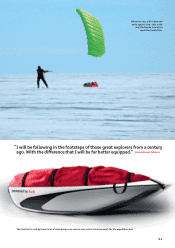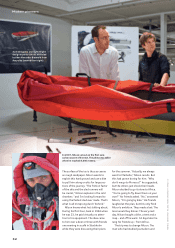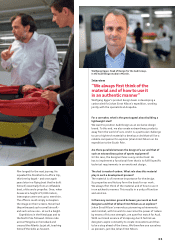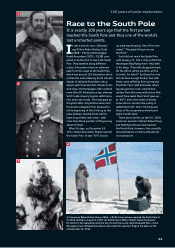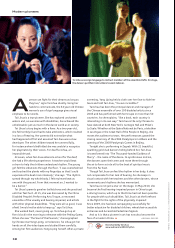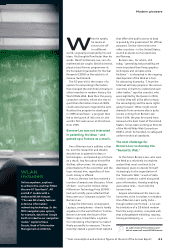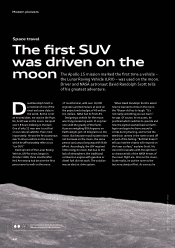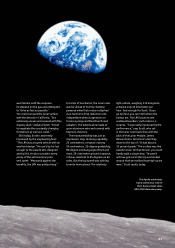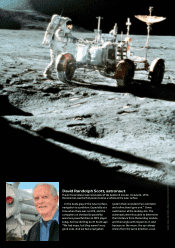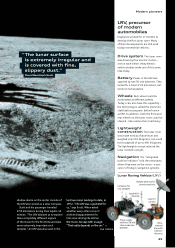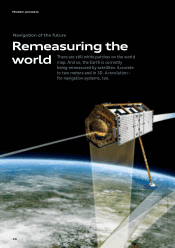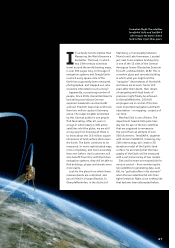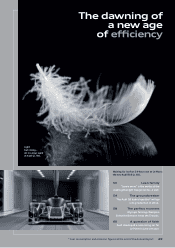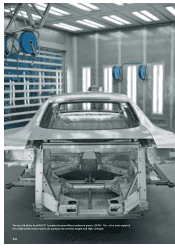Audi 2010 Annual Report Download - page 43
Download and view the complete annual report
Please find page 43 of the 2010 Audi annual report below. You can navigate through the pages in the report by either clicking on the pages listed below, or by using the keyword search tool below to find specific information within the annual report.
41
Modern pioneers
When he speaks,
he seems at
times to be off
in a diff erent
world, singularly possessed by his own
ideas. His thoughts fl ow faster than his
words. Meet Tim Berners-Lee, son of a
mathematician couple, British scientist,
physicist and former programmer at
the European Organization for Nuclear
Research (CERN) on the outskirts of
Geneva, Switzerland.
The 55-year-old is the creator of a
system for networking information
that changed the world like virtually no
other invention in modern history: the
World Wide Web. Back then the young
computer scientist, whose aim was to
quell the information chaos at CERN,
could scarcely have imagined the rami-
fi cations the program he developed
in 1989 would have – a program that
led to the launch of info.cern.ch, the
world’s fi rst web server, at Christmas-
time 1990.
One of Berners-Lee’s oddities is that
he, ever the researcher and idealist,
decided not to patent his ideas or
technologies – and passed up a fortune
as a result. Any fuss about himself he
dislikes, abhors even. He only gives
presentations if the convention and the
topic interest him, regardless of how
much money is off ered.
Even so, Berners-Lee has received a
number of awards over the years. A few
of them – such as the million-dollar
Millennium Technology Prize (2004) –
had such a hefty purse attached that
they came as a “pleasant surprise” for
Berners-Lee.
Today the Internet is omnipresent.
Laptops, smartphones – there’s hardly
anywhere in the world that isn’t online.
Berners-Lee sees the future of the
Web in open, linked data, a system
for interlinking information to make it
freely accessible to everyone. Thus he
recently created a government website
that off ers the public access to data
acquired by the government for offi cial
purposes. Similar sites exist in ten
other countries – in the United States,
as well as places such as Australia
and Norway.
Berners-Lee – for whom, still
today, “generality and portability are
more important than fancy graphics
techniques and complex extra
facilities” – is interested in the ongoing
development of the Web as a tool
for advancing humanity. “I hope the
Internet will help people in the various
countries on Earth to understand each
other better,” says the scientist, who
was knighted by the Queen in 2004,
“so that they will all be able to enjoy
the same dignity and the same rights
going forward.” What might sound
dramatic from someone else is quite
sincere coming from Berners-Lee.
Since 1994, the year he moved from
Geneva to the East Coast of the United
States, he has been working as Director
of the World Wide Web Consortium
(W3C), which he founded, to safeguard
uniform technical standards.
In the future Berners-Lee, who sees
the Web as a relatively incomplete
system that must continue to be
developed, plans to devote himself
increasingly to the organization of
the “Semantic Web,” a web of data
in which context is coded along with
pure information, thereby enabling
associative links – much like the
human brain.
Anyone who believes this man is as
humorless as he is modest is mistaken.
One of Berners-Lee’s party tricks –
though seldom performed – is his per-
fect imitation of a 28-kilobit modem
from the early nineties, complete with
that unforgettable whistling, rasping,
hissing and beeping.
HELGE HOPP
O
Berners-Lee was not interested
in patenting his ideas – and
passed up a fortune as a result. The next challenge for
Berners-Lee: to develop the
“Semantic Web.”
WLAN
included
Online anywhere, anytime –
to achieve this, Audi has fi tted
the new A7 Sportback*, A8
and A8 L* models with a
dedicated WLAN hotspot.
“The new A8 already features
extensive information-
networking technology. In the
MMI navigation plus system,
for example, data from Google
Earth is linked to our navigation
routes,” explains Klaus
Straub, Head of Information
Management at AUDI AG.
* Fuel consumption and emission fi gures at the end of the Annual Report
An audio version of this article is avail-
able at: www.audi.com/ar2010/internet


